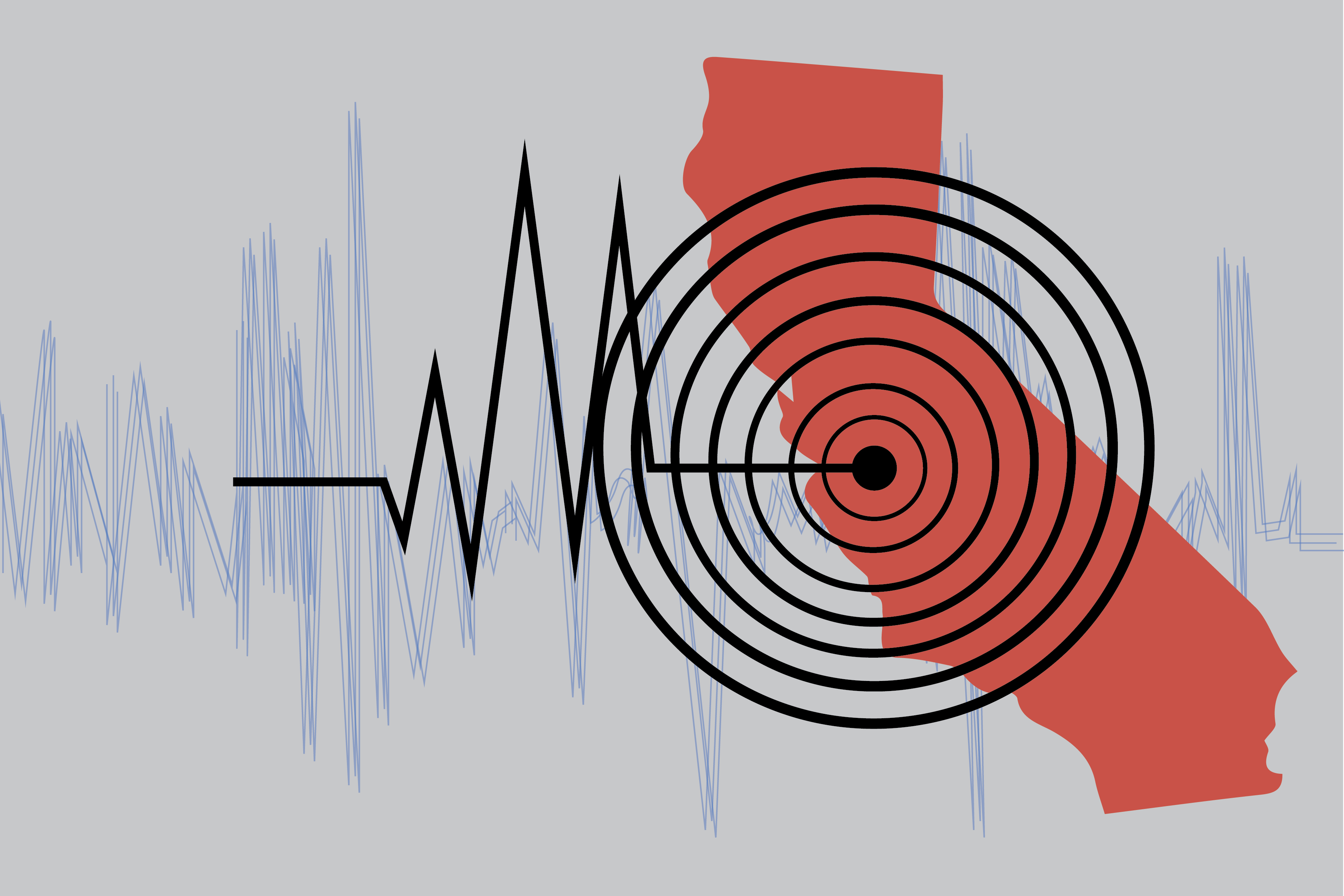
New earthquake warning technology may reduce damage, increase understanding of hazards
Although residents of California continue to be daunted by the threat of earthquakes, one can easily ignore the risks of such a natural disaster and act as if it will never occur. However, as California is home to one of the most dangerous faults, the San Andreas Fault, Californians must be able to ultimately prepare for the event of an earthquake.
Davis is unlikely to experience a major earthquake, but is still susceptible as it will likely be affected by neighboring cities’ post-earthquake shaking.
The 2017 United States Geological Survey (USGS) forecast, the only federal agency responsible for nationwide earthquake recording and reporting, identified new, potential ground-shaking hazards. These new USGS maps include both human-induced and natural earthquakes, but despite the overall seismic hazard decrease from the 2016 forecast, there continues to be a significant likelihood for ground-shaking damage.
“While we know much more about earthquakes than we did 40 years ago, and our data is vastly better, we still do not know how to precisely predict earthquakes,” said John Rundle, a distinguished UC Davis professor of physics, civil engineering and geology and the board chair of the OpenHazards Group, in an email interview. “And given what we have learned, it does not appear that deterministic prediction will be a reality in the next decade or more.”
“Through the science of complex systems and internet technology, we can make the world more resilient to losses from catastrophic events,” according to the OpenHazards Group, an earthquake forecasting and hazard analysis website.
The website advocates that groups of individuals work together, combine expertise and focus on the development and use of “tail-risk analytics to assess, forecast, and mitigate catastrophic events.”
Rundle recommended that residents of Davis should be prepared for an earthquake no matter the likelihood.
“While it is highly unlikely that we would have a major earthquake within, say, 10 miles of Davis, there have been magnitude 6+ earthquakes in Winters and Vacaville in 1892,” Rundle said. “The best way to deal with these disasters is to seismically strengthen buildings to modern standards.”
In terms of preparation, Rundle stated that the City of Davis meets current seismic building codes, in the wake of the earthquake threats during the construction of infrastructures.”
Through the advancement of technology, the development of programs, and data analysis from computational methods, scientists can begin to further understand earthquakes as improvement remains a part of progress.
“Civil engineering, in particular, geotechnical engineering, is a relatively young profession, and with regards to earthquakes, one of the challenges is that we are learning more after the damage has happened rather than already being prepared for it,” said Katerina Ziotopoulou, a UC Davis professor in the College of Engineering.
There are several early earthquake alerting, warning and tracking systems, such as the MyShake/MyQuake app, created by the Berkeley Seismology Lab, which maps and tracks earthquakes through phone sensors. Another app is “QuakeWorks,” developed from the OpenHazards Group, which not only forecasts earthquakes and estimates their damage but also gives information of other hazards via their website.
These free and useful smartphone apps help the public learn more about natural hazards through collected data.
The implementation of an early warning system, ShakeAlert, will eventually provide public warnings seconds before the shaking occurs as stated on the USGS federal website.
All the same, Ziotopoulou emphasized the need for preparation and states two components: “In being prepared, [one] must react [and] protect ourselves, [such as] going under [a] door, desk or having a whistle […].”
The Bay Area Rapid Transit conducted and completed a system-wide vulnerability study in 2002 that indicated if the BART system was not retrofitted, the restoration process after a major earthquake would take years.
“It is always a function of the decision variables that we have — dollars and downtime, and our understanding of what the consequences are, and if it is going to be more expensive to fix [the damages] beforehand or afterwards,” Ziotopoulou said.
Written by: Raymond Ruano — city@theaggie.org



